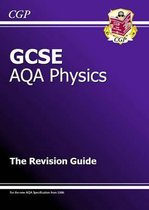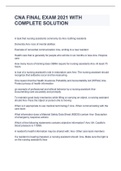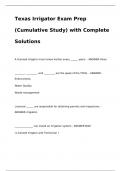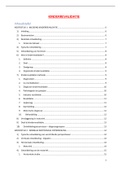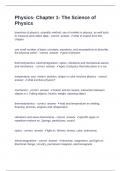GCSE Revision Notes
Contact and non-contact forces:
Forces can affect bodies in several different ways – they can change their shape, speed and
direction.
Vector quantities: Vector quantities have a magnitude and a direction. Examples: force,
velocity, displacement, acceleration, momentum, etc.
Scalar quantities: Scalar quantities have only magnitude and no direction. Examples: speed,
distance, mass, temperature, time, etc.
Vectors are usually represented by an arrow – the length of an arrow shows the magnitude
and the direction of the arrow shows the direction of the quantity.
Contact force: When two objects have to be touching for a force to act.
Non-contact force: If the objects do not need to be touching for the force to act.
Weight, mass and gravity:
Gravitational force is the force of attraction between masses.
Gravity has two important effects: on the surface of a planet, it makes all things fall towards
the ground, and it gives everything a weight.
Mass: The amount of ‘stuff’ in an object. For any given object this will have the same value
anywhere in the universe. Measured in kg with a mass balance.
Weight: The force acting on an object due to gravity. Measured in newtons using a spring
balance or newtonmeter.
Mass and weight are NOT the same thing.
Weight (N) = Mass (kg) x Gravitational Field Strength (N/kg)
W=mxg
On Earth, the gravitational field strength is about 9.8 N/kg, and on the Moon it’s around 1.6
N/kg.
Resultant forces:
Free body diagrams show all the forces acting on an object.
The sizes of the arrows show the relative magnitudes of the forces and the directions show
the directions of the forces acting on the object.
A resultant force is the overall force on a point or object. If you have a number of forces
acting at a single point, you can replace them with a single force as long as the single force
has the same effect as all the original forces together.
If the forces all act along the same line, the overall effect is found by adding those going in
the same direction and subtracting those going in the opposite direction.
1
, When a force moves an object through a distance, energy is transferred, and work is done
on the object.
Work done (J) = Force (N) x Distance (m)
W=Fxs
You can use scale drawings to find resultant forces by drawing all the forces acting on an
object, to scale. Then draw a straight line from the start of the first force to the end of the
last force – this is the resultant force. Measure the length of the resultant force on the
diagram to find the magnitude and the angle to find the direction of the force.
An object is in equilibrium if the forces on it are balanced.
Forces and elasticity:
When you apply a force to an object you may cause it to stretch, compress or bend.
An object has been elastically deformed if it can go back to the original shape and length
after the force has been removed (e.g. a spring).
An object has been inelastically deformed if it doesn’t return to its original shape and length
after the force has been returned.
Work is done when a force stretches or compresses
an object and causes energy to be transferred to
the elastic potential energy store of the object.
Hooke’s Law: The extension of a spring is directly
proportional to the force applied.
Limit of proportionality: The maximum force
above which the graph curves, showing that
extension is no longer proportional to force
(labelled as elastic limit on the graph).
Force (N) = Spring constant (N/m) x Extension (m)
F=kxe
Elastic Potential Energy (J) = ½ x Spring constant (N/m) x Extension² (m)
Ee = ½ x k x e²
Hooke’s Law Required Practical:
1. Set up the apparatus as shown in the diagram.
2. A single mass (0.1 kg, 100g) is attached to the spring, with a
pointer attached to the bottom, and the position of the spring
is measured against the ruler.
3. The mass (kg) and position (cm) are recorded in a table.
4. A further mass is added and the new position measured.
5. The above process continues until a total of 7 masses have
been added.
6. The masses are then removed and the entire process repeated
again,until it has been carried out a total of three times, and
averages can then be taken.
7. Once measurements have been taken:
- The force on the spring can be found by multiplying the mass of the spring (in kg) by 10
2

